Liatris is a flower native to North America. It belongs to the genus Astrovidae, or the so-called Asteraceae. At the moment, lyatris is popular among gardeners, so planting and caring for a plant in the open ground are questions that are often asked.
Content
- 1 Features of Liatris Flower
- 2 Flower propagation options
- 3 Sowing plants in the ground
- 4 Sowing plants using seedlings
- 5 The method of reproduction using processes
- 6 Planting lyatris with tubers
- 7 How to choose the right place for landing
- 8 Watering scheme
- 9 Proper care
- 10 Hilling and mulching process
- 11 Types of Liatrix and their appearance
- 12 What could harm this plant?
Features of Liatris Flower
This plant is quite compact, and often used by landscape designers to decorate the garden. This is due to the fact that it has an original and very attractive appearance, in addition, these flowers exude a pleasant aroma.
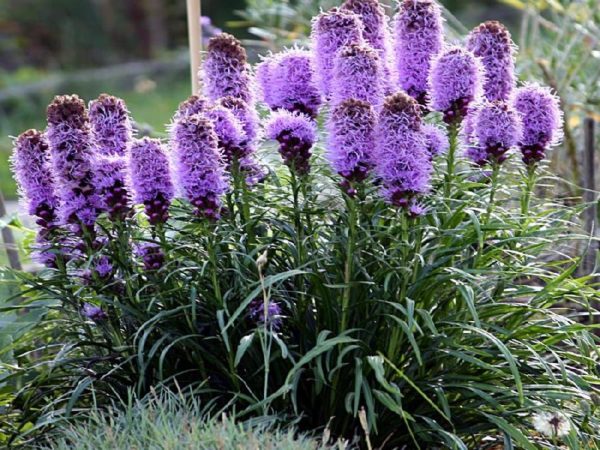
The plant is perennial, so it is convenient to use it for planting in the garden. The flower has tubers that are stored in the soil during the wintering of the plant.
If we talk about the size of the plant, then this flower during intensive growth reaches a height of 30 cm to 1.5 m. A compact bush forms, which erect upright arrows, at the ends of which fluffy inflorescences form. Inflorescences can be lilac, white, red pink flowers. The leaves of the flower are quite narrow and long, resembling needles in appearance.
Flower propagation options
This plant can reproduce in a variety of ways:
- tubers;
- rhizomes;
- elongated root crowns.
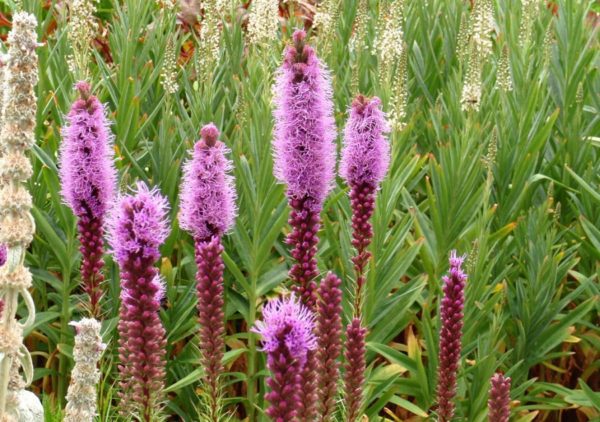
In order to grow a plant, you can buy it in a specialized nursery or purchase it in a store selling seeds and seedlings of flowers. It is important to purchase high-quality planting material, since it is he who will ensure the formation of a healthy plant that can actively develop and bloom.
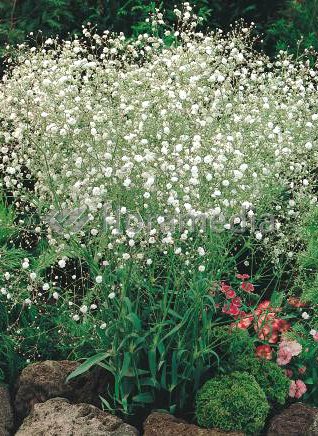 You may be interested in:
You may be interested in:Flowering occurs in the summer. It is quite long and visually very effective. The arrow above is quite fluffy, but gradually sinking down, a bright candle of fluffy villi is formed. In addition to the original flower, which has bright rich colors, a distinctive feature of the plant is its delicate aroma. Its strength is due to the substance coumarin, which is located in the lyatris.
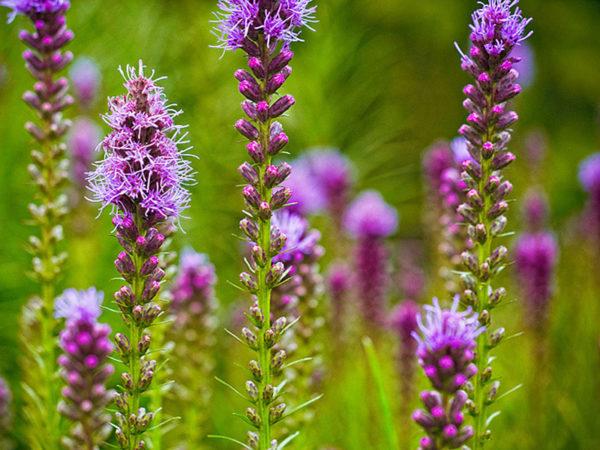
The smell resembles a mixture of vanilla and freshly cut grass.
Sowing plants in the ground
Due to the fact that the flower is quite unpretentious, both in care and when planting, it can be grown effortlessly by planting the seeds directly in the ground.
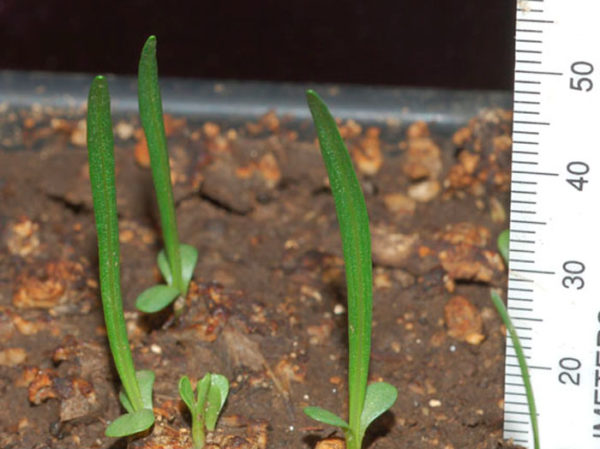
Naturally, sowing should be done taking into account the region. But the main period for planting occurs in mid-spring, in some cases it is planted in September-October.
When planting a lyatris seed, you need to consider the following points:
- in order to ensure a sufficiently nutritious composition of the soil, it is necessary to dig the earth with the introduction of humus;
- planting is carried out by simply scattering seeds on the ground, with further sprinkling with a layer of earth, a maximum thickness of 2 cm;
- also for seed shrinkage, you can use a rake, walking them gently on scattered seeds;
- then by spraying the soil should be sufficiently well moistened.
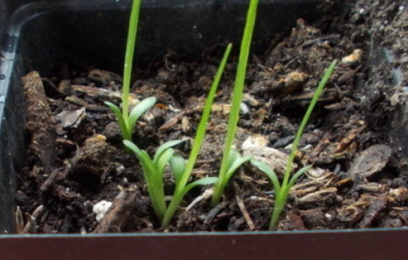
If the lyatris is planted in open ground with the help of seeds, then you can quickly and without hassle get a beautiful decoration of the garden if you take care of the plant.
Sowing plants using seedlings
For those who can’t wait to get beautiful greens of lithium on their lawn as soon as possible, we can recommend planting and care in the open ground, and this method is suitable, for example, for growing in Siberia.
Here, the spring period begins much later than in the middle lane, therefore it is the seedling method that will speed up the process of growing the plant.
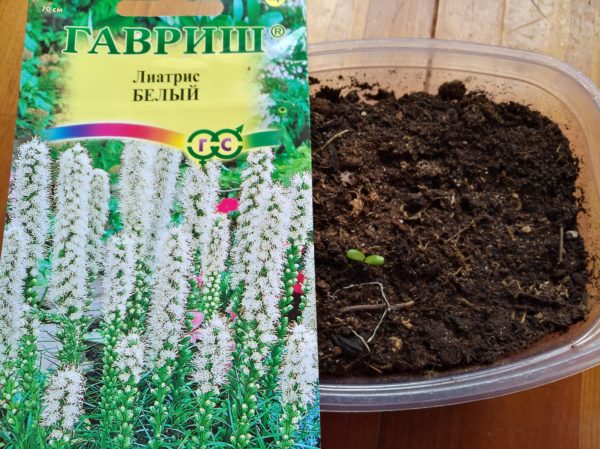
To do this, you must:
- in late February and early March, plant the seeds in separate pots;
- laying the seed to a depth of not more than 1 cm;
- moisten the soil well with a spray gun or sprayer.
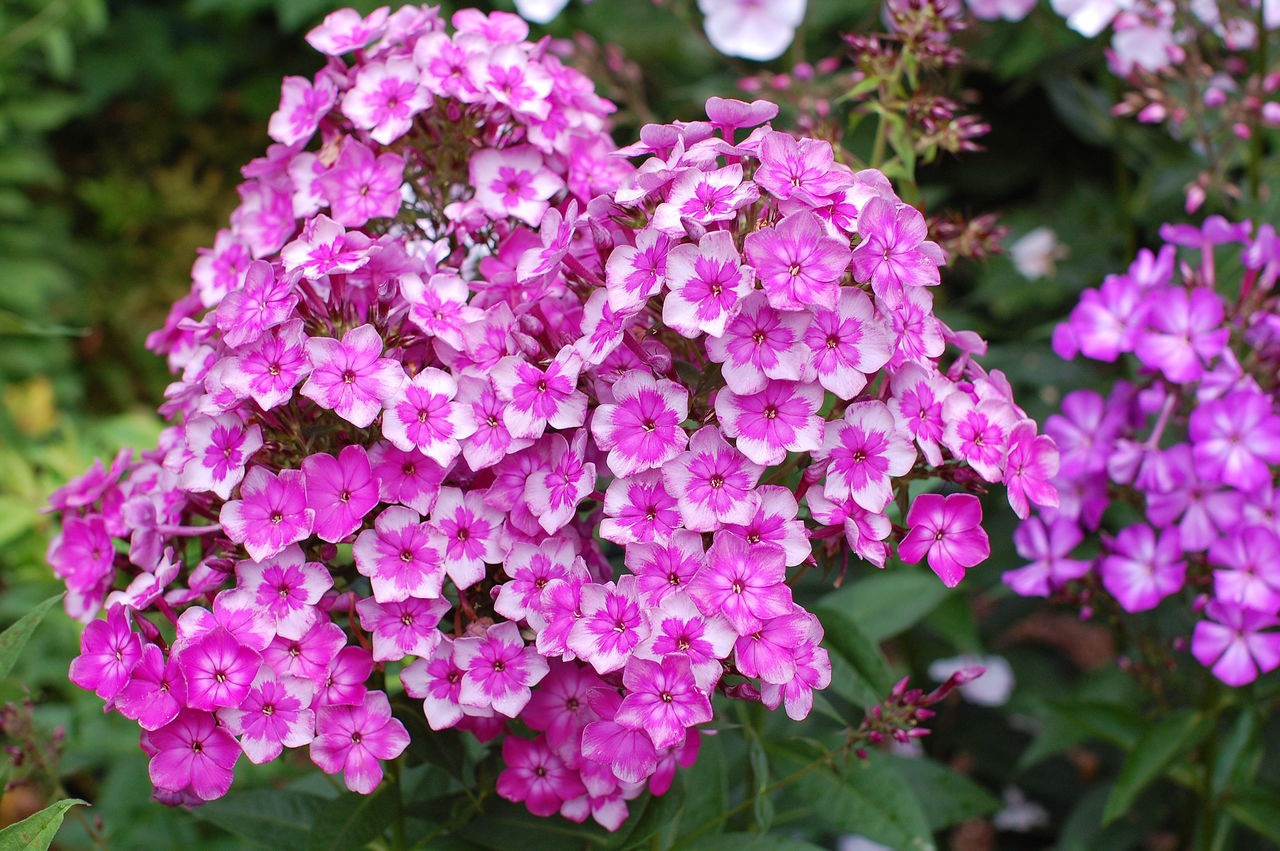 You may be interested in:
You may be interested in:Further, in order for the plants to sprout quickly, it is necessary to provide appropriate suitable conditions. This requires a sufficiently bright room and moderate watering of the soil as the earthen coma dries up.
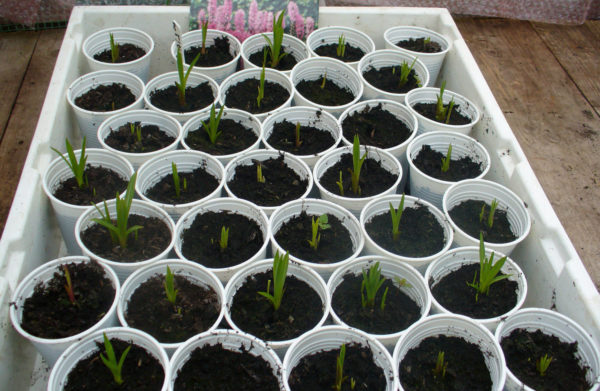
As soon as the seedlings become stronger, they need to be hardened. In order to accomplish this, they are taken outdoors in the daytime. This should be done under appropriate weather conditions.
In the month of May, when the weather becomes more or less established, the plant is transplanted into the open ground. To do this, it must be reloaded in order not to violate the integrity of the root system.
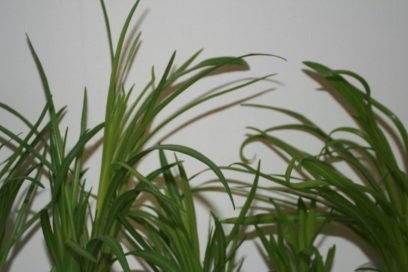
The method of reproduction using processes
In the case of propagation by shoots, it is necessary to take root shoots. It is this method that will provide a fairly quick obtaining of a healthy, full-fledged bush.
In order to implement this method of planting a lyatris, it is necessary to observe the following sequence of actions:
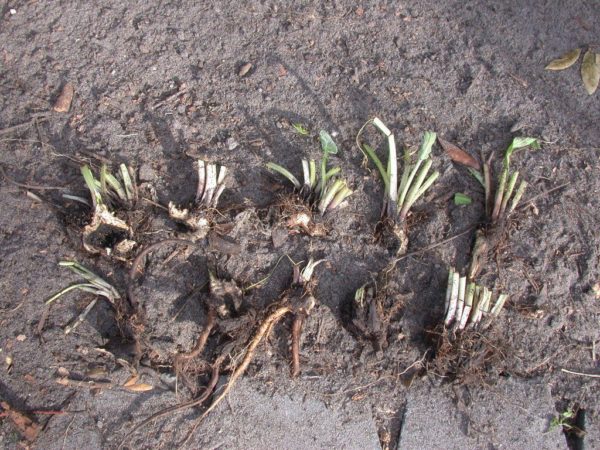
- gently separate the process from the parent plant;
- it must be carefully chosen so that it has its own, well-developed root system;
- a hole about 20-25 cm deep is dug under each process;
- further on the bottom of the hole it is necessary to put humus, filling the hole about 20-25% of the full depth;
- then place the seedling in the hole so that it is deepened by 10-15 cm.
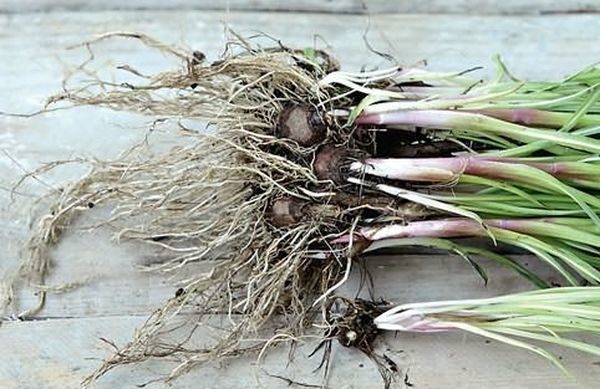
Planting lyatris with tubers
There you can plant it with a tuber. To do this, it is necessary to divide the main tuber into several separate nodules.
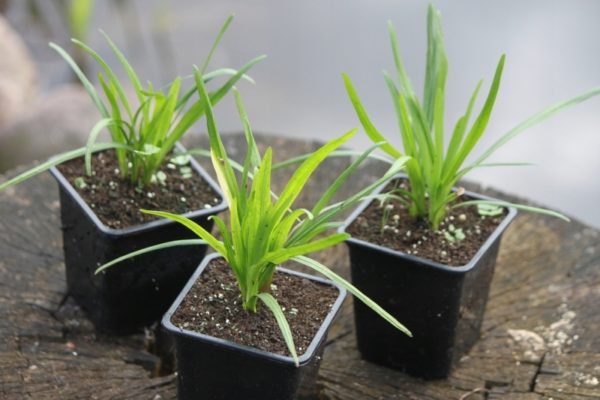
The sequence of actions when planting tubers:
- dig a hole 10-12 cm deep;
- humus or dung can be put to the bottom;
- find a small notch in the tuber - an shoot will grow from this point;
- place the tuber in the pit, but so that the recess looks strictly up;
- sprinkle on top of the ground and pour.
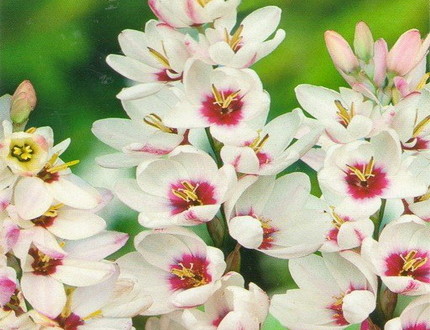 You may be interested in:
You may be interested in:Shoots appear after about 20-40 days, depending on temperature conditions and the required humidity.
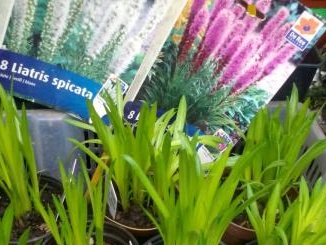
How to choose the right place for landing
It is worth considering that the lyatris will require a certain place in order for it to grow quite a beautiful and bright plant. But he has the most minimal requirements.
In order to make the plant comfortable, it is enough to choose either a bright or a shaded place for it. But the most important thing is to avoid low areas with close occurrence of groundwater.
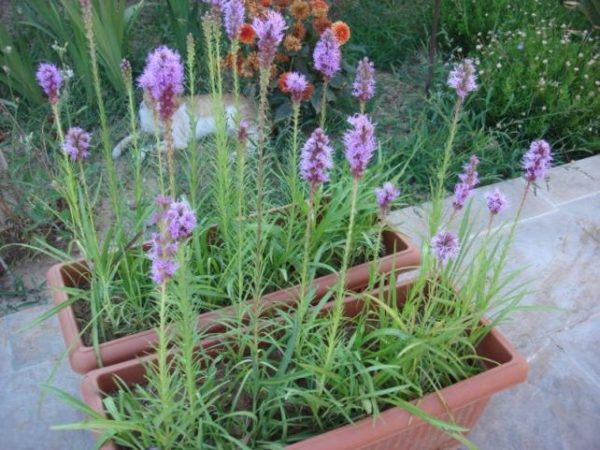
It is also important to periodically make top dressing in the form of humus or manure.
Watering scheme
The plant is prone to a drier climate. Therefore, it is easier to tolerate a small short-term drought than excessive waterlogging of the soil.
Too wet soil negatively affects the plant, and its root system begins to rot. Therefore, to avoid this, it is worth taking care of a sufficiently thick drainage layer.
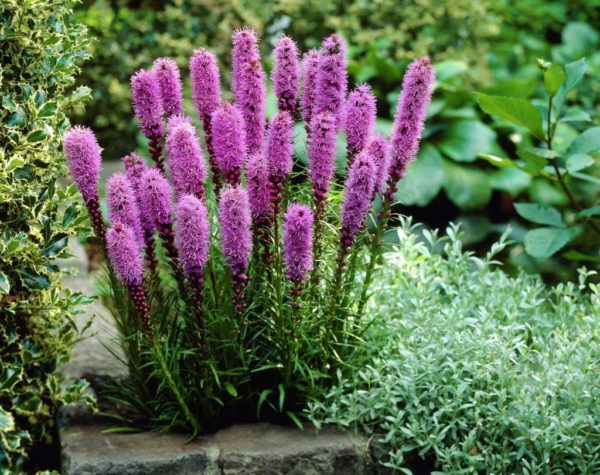
The flower should be watered with a small amount of water, but do it often. This will be better than doing watering rarely, but immediately pouring a lot of water under one bush.
So, if the plant has already formed, then under one fairly tall bush in dry weather, when the soil dries, you can add up to 10 liters of water under one plant.
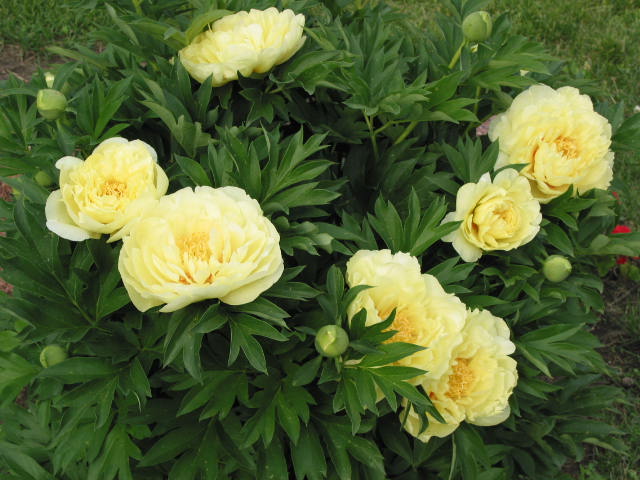 You may be interested in:
You may be interested in:Proper care
The plant needs to be fed. For this, manure or humus is very suitable.
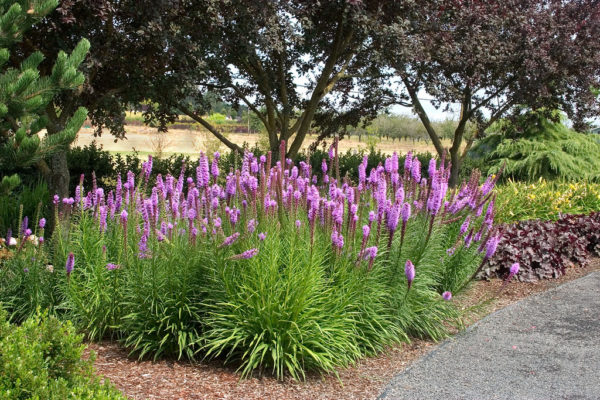
You can also use complex vitamin and mineral fertilizers. They are most often used during the period of active vegetation, and during flowering.
Hilling and mulching process
It should be noted that the root system of the plant lies quite close to the surface of the earth. Therefore, by carrying out earthing up, the effect of exposing the root system can be avoided.
If there is no desire to spud, then you can simply mulch the surface around the bush with peat. Peat can also retain moisture inside the soil, preventing too intense drying of the soil. By the way, using mulching, you can carry out more rare watering.
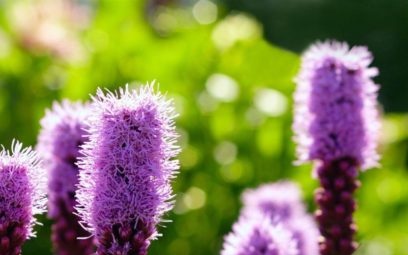
Lyatrix garter and trim. Usually the plant reaches 80 cm, but sometimes its height reaches 1 m. But sometimes if it is provided with good conditions, then the flower can reach 2 m in height. Sometimes a plant tilts the arrows. To avoid the disease of the bush, you can implement its garter. Most often, a special support is used for this. For this purpose, pegs are installed so that between them it is possible to pull the thread on which the plants will rest.
In order for the plant to successfully winter enough in the middle lane, the following conditions must be met:
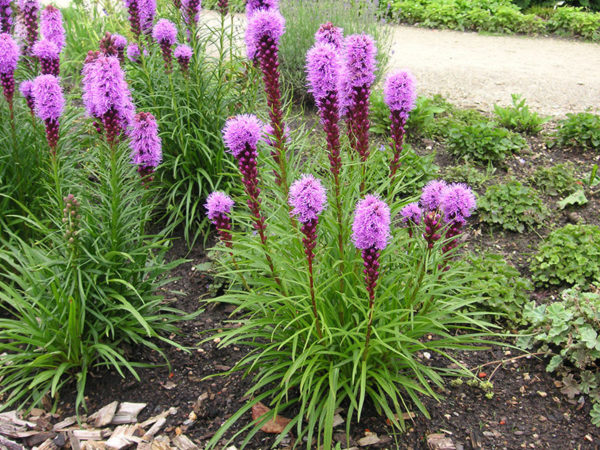
- shoots are necessarily cut to the very root;
- shelter is not required to be erected specially - the plant tolerates wintering well;
- in order to be completely sure that the flower will survive the winter, it is enough to cover the place where the tubers grow with dry foliage or a layer of humus about 10 cm.
Types of Liatrix and their appearance
At the moment, most often in the design of landscaping of the garden, the following types are used:
- Liatris spikelet.
The inflorescence of the flower resembles a really spikelet in shape. The colors of this spikelet can be the most diverse - white, pink, purple, red, purple, purple. The spikelet liatris reaches 1 m in height.
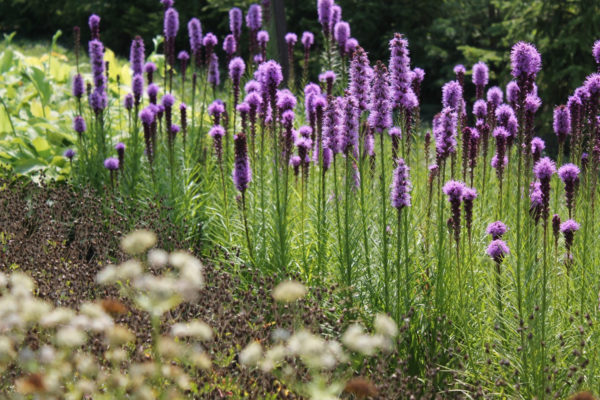
The main time of flowering occurs in the month of June-July. At this time, the plants are most decorative and its flowers are the most dense and double.The most common varieties of lyatrix include floristic vice, florist violet, kobold, flamingo, Bengali, blue bird, spiccato, a burning star, and picador.
- Liatris membranous.
This plant is characterized by greater stunting and compactness of the bush. Foliage is wider and larger than that of spikelet. But then the color scheme, more limited - it ranges from pink to purple. The most common varieties of membranous lyatris are alba, september glory.
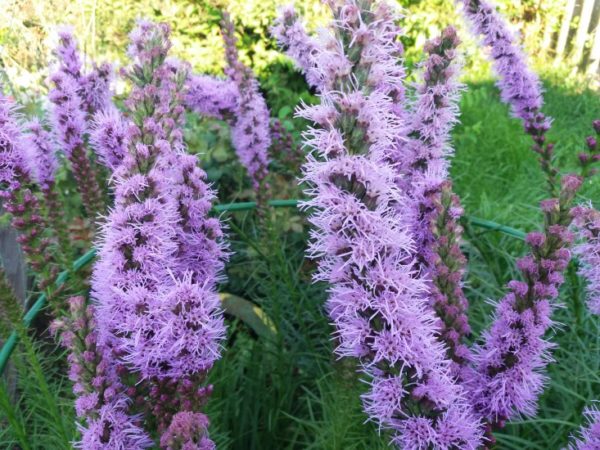
Liatris Alba requires planting and care in the open ground, so it is better to reproduce it with ready-made seeds.
If you compare the varieties of liatris spikelet spicata and alba, they are similar. Planting and care in the open ground they are not much different.
Another species of this beautiful plant is a grungy variety. It has the highest bush height. So it can reach up to 2 m. The color gamut of this species is also limited, as is the case with membranous lyatris.
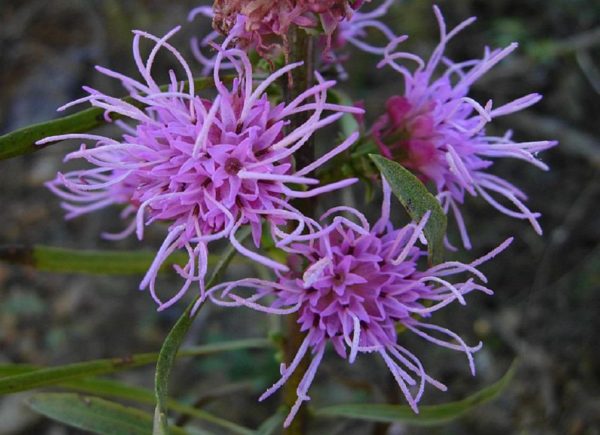
What could harm this plant?
If we talk about pests, then most likely pests such as a bear, snail, slug can cause damage to the bush.
If we talk about diseases, then the flower is most susceptible to the disease of gray or brown rot. In order to avoid such an unpleasant ailment, it is necessary to use antifungal agents or alternative recipes using a mustard solution or iodine solution.
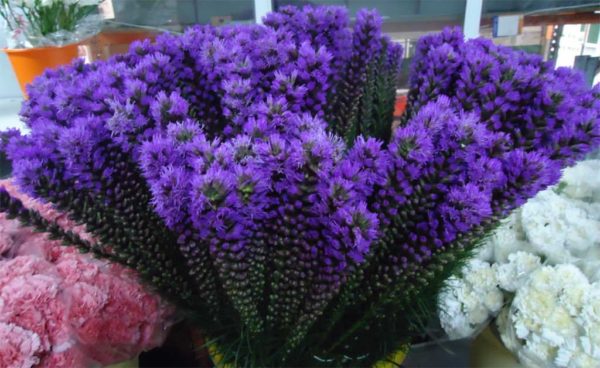
If you provide this unpretentious plant with a minimally suitable care, it will delight its owners with magnificent double flowers, rushing up to the sky.




 10 beautiful annuals that bloom all summer
10 beautiful annuals that bloom all summer Sow in the ground, without seedlings: 10 beautiful and unpretentious flowers
Sow in the ground, without seedlings: 10 beautiful and unpretentious flowers Platicodon planting and outdoor care
Platicodon planting and outdoor care Hosta - planting and care in the open ground in the Urals
Hosta - planting and care in the open ground in the Urals